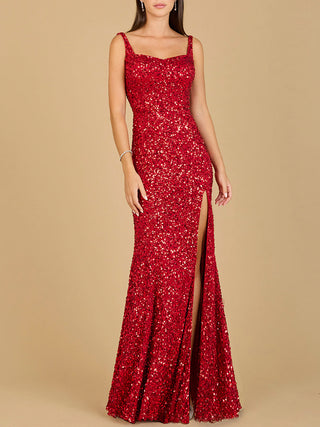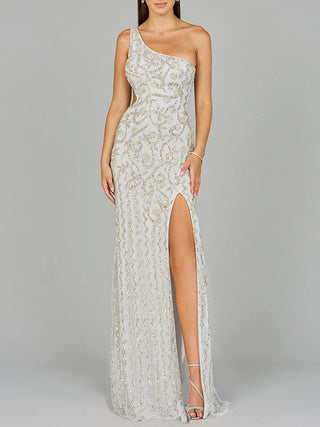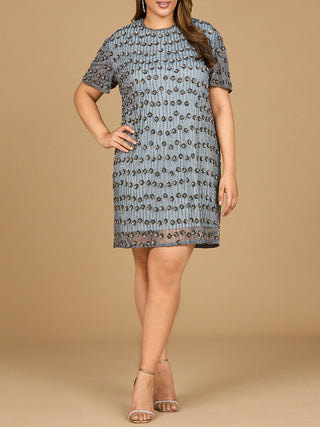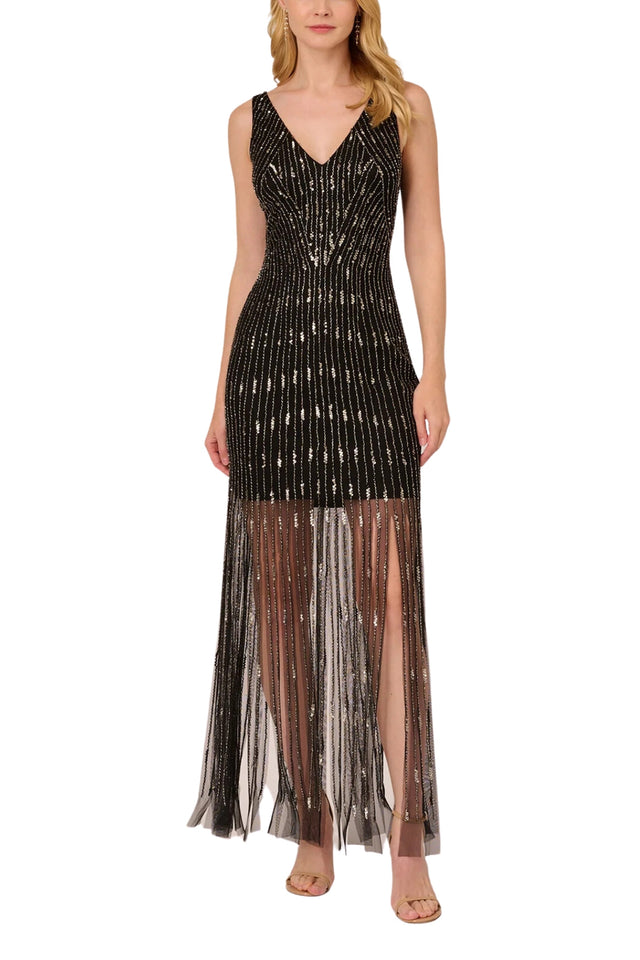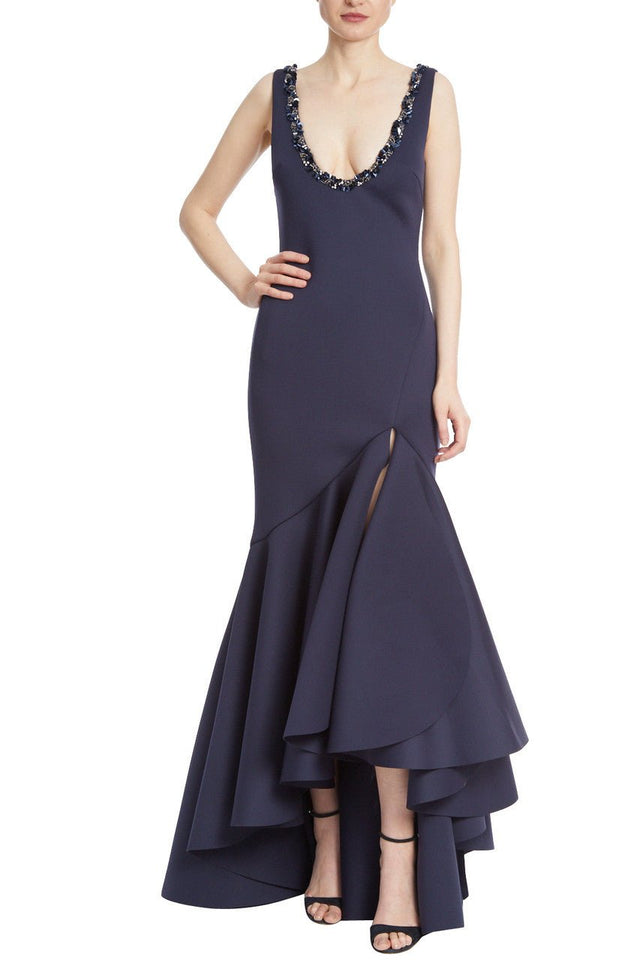Here's an overview:
- Introduction: Understanding Islamic Clothing
- Pre-Islamic Clothing Traditions
- Early Islamic Era: Clothing in the Prophet’s Time
- Medieval Islamic Clothing: Under the Caliphates
- Cultural Influences: Regional Variations in Islamic Dress
- Contemporary Trends: Modest Fashion and Global Influence
- The Role of Islamic Clothing in Identity and Expression
- Conclusion: Reflecting on the Evolution and Future of Islamic Clothing
Introduction: Understanding Islamic Clothing
When exploring Islamic clothing, it's crucial to appreciate both the cultural significance and the modern adaptations that have emerged over time. As I delve into the evolution of abaya dresses, I find that tradition meets fashion in fascinating ways.
Historical Roots and Cultural Significance
The cornerstone of Islamic clothing, particularly for women, includes garments like the abaya, hijab, and various styles of maxi dresses. These clothing items, deeply rooted in tradition, serve not only as expressions of faith but also as markers of modest lifestyle. The significance of hijab, understanding its purpose, extends beyond mere covering; it's a profound statement of identity and devotion.
Modern Abaya: Where Tradition Meets Fashion
In recent years, abaya trends have evolved significantly. This evolution brings an exciting blend of tradition and contemporary fashion. Today, one can see how the abaya has transformed to embrace elegance with our ultimate guide. Modern designs range from the classic, like the alissa maxi abaya to more ornate pieces such as the alyah abaya maxi dress and safa bohiman digital print floral maxi dress in blue abaya dress.
Popular Styles and Trends
Several styles have gained popularity due to their blend of elegance and modesty:
- Halimah Flower Party Maxi Dress with Long Sleeve: This dress incorporates vibrant floral designs, perfect for social gatherings.
- Madinah Bohemian Button Front Abaya Dress in Green: This abaya fuses traditional design with bohemian influences, making it suitable for various occasions.
- Adrienne Midi Dress: Though shorter than most abayas, this midi dress maintains modesty while providing a modern twist.
Embracing Modernity
As I explore these trends, it's clear how contemporary designers have embraced the challenge of maintaining modesty while offering fashionable clothing. This balance is particularly evident in pieces like the safa bohiman digital print floral maxi dress and the halimah flower party maxi dress with long sleeve, which offer vibrant designs and modern aesthetics.
Final Thoughts
The journey of Islamic clothing from ancient roots to contemporary styles is a testament to the dynamic nature of fashion within the framework of tradition. It highlights how the essentials of modesty and identity can harmoniously coexist with modern elegance.
Pre-Islamic Clothing Traditions
When I delve into the evolution of abaya dresses, understanding the pre-Islamic period is paramount. Before the abaya trends began to dominate, clothing was primarily influenced by factors such as geography, social status, and cultural practices. People in the Arabian Peninsula primarily wore loose-fitting garments due to the harsh desert climate, which required both protection and breathability.
Notably, men often donned a "dishdasha" or "thawb," a long robe that covered the body fully. These were primarily made from lightweight materials like cotton or wool, making it easier to endure the grueling heat. Women, on the other hand, wore long dresses coupled with a headscarf or veil, showcasing how tradition meets fashion even in the earliest of times. These garments were free-flowing to ensure modesty and comfort.
Essential Elements of Pre-Islamic Attire
-
Materials Used
- Cotton and wool were the primary materials.
- Dyed fabric being rare, most clothing was in natural shades.
-
Designs and Patterns
- Simple and utilitarian designs.
- Occasional embroidery for the affluent.
-
Gender Differences
- Men wore ankle-length robes with headgear.
- Women wore floor-length dresses with face coverings.
Geographical Influence
The influence of nomadic lifestyles also played a significant role. I find that Bedouins, for instance, were adept at making versatile clothing that could adapt to different needs. This included clothing that could protect from sandstorms and provide warmth during cold desert nights.
Social and Cultural Factors
Social stratification was visible in the attire as well. The affluent used finer fabrics and more elaborate designs, while the common folk kept theirs plain. Events like weddings or feasts warranted elaborate dresses similar to the modern-day Halimah flower party maxi dress with long sleeves.
The Modest Lifestyle
The pre-Islamic period also set the groundwork for a modest lifestyle, evident from the preference for full coverage and loose clothing. Such trends are reflected in modern dresses like the Alissa Maxi Abaya and Alyah Abaya Maxi Dress. Furthermore, the significance of the hijab, understanding its purpose even in pre-Islamic times, cannot be understated. Women donned headscarves not just for modesty, but also as a shield from the elements.
Legacy of Pre-Islamic Traditions
Finally, examining pre-Islamic attire offers invaluable insights into the modest yet elegant clothing choices that have evolved into today’s styles. Contemporary designs like the Safa Bohiman Digital Print Floral Maxi Dress in Blue Abaya Dress or the Madinah Bohemian Button Front Abaya Dress in Green continue to embrace elegance with our ultimate guide to traditional meets modern fashion.
This period's penchant for both functionality and modesty is evident in today's modest lifestyle choices, ensuring these ancient traditions remain influential.
Islamic Foundations: The Quran and Hadith
In exploring the evolution of abaya dresses where tradition meets fashion, one must understand the core Islamic texts that underpin modest clothing: the Quran and Hadith. These sacred scripts provide foundational guidelines for modesty and attire, which have influenced abaya trends, embracing elegance with our ultimate guide.
The Quran
The Quran, Islam's holy book, emphasizes modesty in appearance and conduct. Key verses include:
- Surah An-Nur (24:31) – Advising women to draw their veils over their bosoms and not display their beauty except to their husbands and close family members.
- Surah Al-Ahzab (33:59) – Instructing women to wear outer garments when in public to prevent harassment.
These directives support the modest life style and guide fashion choices, influencing the creation of innovative designs like the Alissa Maxi Abaya and Alyah Abaya Maxi Dress.
The Hadith
The Hadith, sayings of the Prophet Muhammad (PBUH), provide additional insights into the significance of hijab and the principles of modest dress. Relevant Hadiths include:
- Abu Dawood, Book 32, Number 4092 – Narrates the necessity of covering the entire body except the face and hands.
In addition to traditional designs, modern interpretations have emerged, such as the Safa Bohiman Digital Print Floral Maxi Dress in Blue Abaya Dress and the Halimah Flower Party Maxi Dress with Long Sleeve. These clothing items reflect a harmonious blend of religious adherence and contemporary aesthetics.
Tradition Meets Fashion
When looking at historical contexts, the traditional abaya was a simple, black cloak. However, today’s abayas, like the Madinah Bohemian Button Front Abaya Dress in Green and Adrienne Midi Dress, showcase how designers integrate cultural heritage with modern trends.
In understanding the significance of hijab and the purpose behind modest attire, the balance between faith and fashion is seen clearly. Contemporary abayas respect religious guidelines while embracing fashionable elements, enabling Muslim women to express their personal style within a modest framework. This journey is emblematic in collections like the Madinah Bohemian Button Front Abaya Dress in Green.
Ultimately, the Quran and Hadith continue to guide the modest clothing market, ensuring that faith is interwoven with fashion innovations, aligning seamlessly with the essence of a modest lifestyle.
Early Islamic Era: Clothing in the Prophet’s Time
In the early Islamic era, the clothing worn by men and women was profoundly influenced by the principles of modesty and functionality. I observe how these garments evolved and connected tradition with fashion over time. Abayas, essential to this era, exemplified how tradition meets fashion, similar to modern abaya trends that embrace elegance.
Men's Clothing
Men typically wore:
- Qamees (Tunic): A long shirt extending to the knees or just below. These tunics resembled what we might see today in the modest lifestyle sphere.
- Sirwal (Trousers): Loose-fitting pants worn under the qamees.
- Imama (Turban): Headwear often wrapped around the head in various styles, signifying status, and identity.
Women's Clothing
For women, the abaya dress was fundamental:
- Abaya: A long, flowing cloak covering the body, ensuring modesty. Today, contemporary styles like the Alissa Maxi Abaya and the Safa Bohiman Digital Print Floral Maxi Dress in Blue reflect this timeless elegance.
- Khimar/Hijab: Coverings worn over the head and shoulders. The significance of hijab and understanding its purpose has always been central to the attire practice.
Fabrics and Materials
Primary materials included:
- Wool: Common among the Bedouins and early Islamic society for its durability and warmth.
- Cotton: Imported from Egypt and India, was highly valued for its comfort and breathability.
Colors and Decor
Though mostly plain, some attire featured:
- Basic Colors: Predominantly white, beige, brown, black, and occasionally green, like the Madinah Bohemian Button Front Abaya Dress in Green seen today.
- Simple Embellishments: Modest designs or decorations reflecting one's social status and regional origins.
Special Occasions
For more significant events, distinct attire:
- Enhanced Abayas: More elaborate abayas such as the Halimah Flower Party Maxi Dress with Long Sleeve or Adrienne Midi Dress, reflecting social standing and celebratory mood.
- Jewelry: Modest adornments signaling personal wealth and status.
The clothing practices of the Prophet's time laid a foundational ethos for modest dressing, integrating it into personal and community identity, much like how the contemporary Alyah Abaya Maxi Dress does today.
Medieval Islamic Clothing: Under the Caliphates
In exploring the evolution of abaya dresses where tradition meets fashion, it’s fascinating to look back at medieval Islamic clothing under the Caliphates. When I delve into the historical tapestry, I find that attire was marked not only by elegance but also by modesty and functionality, much like today's abaya trends. The realm of medieval Islamic fashion blended various influences due to the expansive reach of the Caliphates, from Spain to India. Understanding the significance of hijab for instance, helps in appreciating the continued relevance and evolution of these garments.
Fabrics and Materials
During the medieval period, the choice of fabric was crucial for expressing social status and regional identity:
- Silks: Highly prized and often elaborately embroidered.
- Cotton and Linen: Common among the masses, yet finely spun to maintain comfort.
- Wool: Especially in colder climates, often woven into cloaks.
Styles and Garments
The garments themselves were varied but shared common features of modesty:
- Abayas: Flowing robes, the predecessors to pieces like the Alissa Maxi Abaya and Alyah Abaya Maxi Dress, designed for grace and modesty.
- Kaftans: Long tunic-like garments, layered to showcase status.
- Head Coverings: Veils and turbans which, much like the modern-day hijab, held significant cultural and religious importance.
Influences and Integration
Drawing from Constantinople to the heart of the Islamic world, fashion became an amalgamation:
- Persian Influence: Looked at the intricate patterns seen in garments similar to the Safa Bohiman Digital Print Floral Maxi Dress in Blue Abaya Dress.
- Byzantine Influence: Led to luxurious brocades akin to the adornments on a Halimah Flower Party Maxi Dress with Long Sleeve.
Cultural Significance
Medieval Islamic clothing was not just about outward appearance; it represented a way of life:
- Modest Lifestyle: Clothing like the Madinah Bohemian Button Front Abaya Dress in Green was rooted in a lifestyle that emphasized discretion and humility.
- Social Indicators: Details and fabric quality notified one's social standing similarly to how modern designs like the Adrienne Midi Dress signal contemporary elegance.
Overall, I recognize that medieval Islamic attire was a sophisticated blend of practicality and identity. The motifs from centuries ago have unmistakably infused contemporary garments, leading to the modern modest fashion revolution we see today. Embrace elegance with our ultimate guide to understanding how these historical threads weave through today’s fashions.
Cultural Influences: Regional Variations in Islamic Dress
The evolution of abaya dresses highlights how tradition meets fashion, representing a blend that tells a story through fabric and design. As I explore the wide range of styles, it becomes evident how regional differences account for diverse expressive forms among Islamic clothing.
Middle Eastern Attire
In the Middle East, the abaya trends embrace elegance with our ultimate guide. The traditional black abaya remains a staple, but variations have emerged:
- Alissa Maxi Abaya: Known for its flowy elegance, often detailed with intricate embroidery.
- Alyah Abaya Maxi Dress: Renowned for luxurious fabrics and sophisticated cuts, becoming a favorite for formal occasions.
- Halimah Flower Party Maxi Dress with Long Sleeve: Perfect for gatherings, this dress integrates modern tastes with floral designs.
- Safa Bohiman Digital Print Floral Maxi Dress in Blue Abaya Dress: A crowd-puller with vibrant floral patterns suitable for casual and semi-formal settings.
South Asian Styles
Moving to South Asia, an emphasis on rich embellishments and bright colors is noticeable. Clothing like the Madinah Bohemian Button Front Abaya Dress in Green stands out for its fusion of traditional motifs with contemporary styling. Such designs often feature:
- Heavy embroidery: An integral part of their cultural attire.
- Bold colors: Vibrant hues depict joy and festivity.
- Diverse fabrics: Including silk, velvet, and brocade.
North African Variations
In North Africa, the attire incorporates regional fabrics and intricate details:
- Adrienne Midi Dress: Frequently chosen for everyday modest wear, blending practicality with sophistication.
- Kaftans and Djellabas: Adorned with decorative stitching and sometimes metallic accents.
The Significance of Hijab
Understanding the significance of hijab is crucial. It offers insight into its multifaceted purpose, encompassing modesty, identity, and cultural expression.
Contemporary Western Adaptations
In Western countries, Islamic clothing often fuses modest lifestyle paradigms with current fashion trends:
- Mix-and-match styles: Pairing traditional abayas with mainstream fashion items.
- Modest fashion brands: Emerging to offer a wide range of clothing that aligns with both Islamic principles and Western aesthetics.
Reflecting on these cultural influences, I observe how each region adapts the abaya and other Islamic garments, reflecting unique societal norms and artistic expressions, contributing to the dynamic world of Islamic fashion.
## The Ottoman Empire and Its Influence on Islamic Attire
Understanding the history of Islamic attire involves exploring the profound impact of the Ottoman Empire on the evolution of garments like abaya dresses. During the Ottoman era, the fusion of local traditions with imperial aesthetics crafted a unique sartorial identity, marking the point where tradition meets fashion.
### Influence of Ottoman Aesthetics
- **Rich Fabrics and Embellishments**: The Ottoman period saw the introduction of luxurious fabrics like silk and velvet, embellished with intricate embroidery and gold threads. These elements continue to influence contemporary abaya trends, as seen in the stunning designs of the _Alissa Maxi Abaya_ and the _Alyah Abaya Maxi Dress_.
- **Color and Pattern**: Ottoman attire often featured bold colors and elaborate patterns. Modern abayas, like the _Safa Bohiman Digital Print Floral Maxi Dress in Blue_, reflect this legacy through vibrant prints and colors.
### Integration of Functionality and Modesty
The Ottoman Empire was pivotal in integrating functionality with modesty, adhering to the tenets of a [modest life style](https://bybaano.com/pages/modest-life-style). This principle is visible today in designs like the _Halimah Flower Party Maxi Dress with Long Sleeve_ and the _Madinah Bohemian Button Front Abaya Dress in Green_, where practicality meets aesthetic elegance.
### Cultural Significance
- **Hijab Integration**: The significance of the hijab during the Ottoman period was profound. Women adorned themselves with the hijab, understanding its purpose as both a religious and cultural statement. The hijab continues to be a symbol of modesty and fashion, reflecting the legacy of Ottoman influence.
- **Gowns and Dresses**: The iconic Ottoman gowns have inspired various contemporary outfits. The _Adrienne Midi Dress_, for instance, embodies the timeless elegance rooted in Ottoman designs, merging historical influences with modern chic.
### Lasting Legacy
The Ottoman Empire’s sophisticated sense of style has left an indelible mark on contemporary Islamic fashion. From the meticulous attention to detail in fabric choices to the continued celebration of modest life style, the echoes of history are evident in modern abaya designs.
Fashion enthusiasts and designers draw inspiration from this rich heritage, ensuring that the elegance and grandeur of Ottoman clothing continue to influence today’s trends, thus embracing elegance with our ultimate guide to contemporary Islamic attire.
## Colonial Impact on Islamic Clothing Practices
During the era of colonialism, Islamic societies experienced significant changes in their traditional attire. I have examined this profound shift closely, recognizing how colonial influences have left indelible marks on clothing practices that persist today. The introduction of Western fashion norms brought new fabrics, cutting techniques, and styles that intertwined with the established modest lifestyle of Islamic dress codes.
### The Evolution of Abaya Dresses
Colonial powers often enforced cultural assimilation, which included the adoption of European clothing styles. Despite these pressures, the abaya remained steadfast as a symbol of modesty and tradition. This resilience highlighted the entrenched cultural importance of the abaya. Modern iterations like the **Alissa Maxi Abaya**, **Alyah Abaya Maxi Dress**, and the **Safa Bohiman Digital Print Floral Maxi Dress in Blue Abaya Dress** reflect how tradition meets fashion, embracing influences while maintaining core values.
### Impact on Hijab and Modesty
Understanding the significance of the hijab is crucial. My research indicates that, during colonial times, the hijab often became a point of resistance against cultural imperialism. Many Muslim women continued to don the hijab to assert their identity and faith amid changing political landscapes. The result was a synthesis of modesty with contemporary influences, evidenced by evolving styles like the **Halimah Flower Party Maxi Dress with Long Sleeve**.
### Adaptation and Hybridization of Styles
Colonialism also influenced daily wear, leading to hybrid styles that combined Western and Islamic elements. For instance, the **Madinah Bohemian Button Front Abaya Dress in Green** shows how bohemian motifs were merged with traditional sensibilities. Similarly, the **Adrienne Midi Dress** reflects a synthesis where modesty meets current fashion trends, maintaining a balance between new and old world styles.
### Resilience of Traditional Attire
Despite the pervasive influence of colonial powers, the core elements of Islamic clothing endured. The persistence of traditional garments amidst imposed Western fashion demonstrated resilience and adaptability. Modern abaya trends continue to honor this heritage, offering guides that help contemporary styles embrace elegance while preserving essential elements of modest wear.
Modern Islamic Clothing: From Tradition to Fashion
Exploring the evolution of abaya dresses is a fascinating journey that reveals how tradition meets fashion. Abaya trends have evolved significantly over time, blending cultural significance with contemporary styles. In today's fashion world, abayas are not just about modest apparel but are also a statement of elegance and style.
I have always been intrigued by how abaya dresses have transitioned from traditional to fashionable attire. The Alissa Maxi Abaya, for instance, exemplifies how modern design can embrace tradition. Similarly, the Alyah Abaya Maxi Dress stands as a testament to how elegance and modern aesthetics can coexist in Islamic clothing.
When I examine the current trends, it's clear that abayas now come in various styles, catering to different tastes. The Safa Bohiman Digital Print Floral Maxi Dress in Blue is a perfect blend of modesty and contemporary design. For parties and special occasions, the Halimah Flower Party Maxi Dress with Long Sleeve offers a vibrant yet modest option.
-
Key Abaya Styles:
- Alissa Maxi Abaya: A harmonious blend of tradition and modernity.
- Alyah Abaya Maxi Dress: Elegant and contemporary.
- Safa Bohiman Digital Print Floral Maxi Dress in Blue: A stylish choice for modern women.
- Halimah Flower Party Maxi Dress with Long Sleeve: Perfect for special occasions.
- Madinah Bohemian Button Front Abaya Dress in Green: Combining bohemian vibes with traditional modesty.
The Adrienne Midi Dress also deserves a mention, as it captures the essence of a modest lifestyle while incorporating modern fashion trends. This blend is what makes Islamic clothing adaptable and appealing to a broad audience.
Understanding the significance of hijab is crucial when discussing modern Islamic clothing. Its purpose extends beyond a mere fashion statement; it represents a commitment to modesty and piety. Hijabs today are available in numerous styles, colors, and patterns, allowing women to express their individuality while adhering to their faith.
In summary, modern Islamic clothing beautifully illustrates how tradition can meet fashion, embracing elegance in contemporary designs. From the evolution of abaya dresses to the significance of the hijab, it is clear that modesty can coexist with style in a dynamic and fashionable manner.
Contemporary Trends: Modest Fashion and Global Influence
As I delve into the current landscape of Islamic clothing, I can't help but reflect on how the evolution of abaya dresses has significantly blended tradition with modern fashion. Abaya trends now embrace elegance with our ultimate guide showcasing some exquisite pieces such as the Alissa Maxi Abaya and the Alyah Abaya Maxi Dress.
Modern Abaya Styles
Today's abayas come in a variety of styles that are anything but monotonous. Here are a few notable mentions:
- Safa Bohiman Digital Print Floral Maxi Dress in Blue Abaya Dress - This dress captures the essence of digital prints fused with traditional elements.
- Halimah Flower Party Maxi Dress with Long Sleeve - Perfect for gatherings, this piece combines party aesthetics with modesty.
- Madinah Bohemian Button Front Abaya Dress in Green - This abaya integrates bohemian vibes, offering a relaxed yet stylish look.
The Purpose and Significance of Hijab
Understanding the significance of hijab is vital in comprehending the broader modest lifestyle. The hijab not only serves a religious purpose but also symbolizes identity and empowerment for many women globally. As I see it, the hijab is a versatile garment contributing to both cultural expression and personal modesty.
Versatility in Modest Fashion
Fashion has bounded forwards, providing versatility in modest clothing. For instance, the Adrienne Midi Dress offers a modern take on modesty, balancing professional attire with conservative design. These modern designs prove that it is entirely possible to dress stylishly while adhering to the principles of modest fashion.
Global Influence
The global influence of modest fashion cannot be overstated. Influential designers and mainstream fashion labels are increasingly embracing modesty, reflecting its growing appeal. This global acceptance highlights the power of modest fashion as a significant and influential part of the broader fashion industry.
In conclusion, it's exciting to witness how today’s abaya trends and modest fashion movements continue to evolve, reflecting a blend of tradition and contemporary aesthetics. The fashion industry now celebrates this diversity, offering countless options for those who cherish both modesty and style.
The Role of Islamic Clothing in Identity and Expression
As I explore the evolution of abaya dresses, it's evident that tradition meets fashion in a unique intersection of past and present. Islamic clothing, especially abayas, plays a crucial role in expressing identity and maintaining a modest lifestyle. These garments are part of a rich cultural tapestry, reflecting both personal and religious aspects of life.
Tradition Meets Fashion
In recent years, abaya trends have evolved significantly, embracing elegance and modernity. Designers have infused traditional garments with contemporary styles, offering pieces that resonate with today's fashion-forward individuals. Consider the Alissa Maxi Abaya and the Alyah Abaya Maxi Dress—these items reflect the adaptability of traditional wear in a modern context.
Expressions Through Patterns and Styles
Islamic clothing isn't just about functionality; it's also about conveying personal style. Vibrant and intricate designs like the Safa Bohiman Digital Print Floral Maxi Dress in Blue Abaya Dress and the Halima Flower Party Maxi Dress with Long Sleeve symbolize a blend of cultural heritage and modern artistry. These garments allow women to express their individuality while adhering to the principles of modesty.
Popular Styles Include:
- Madinah Bohemian Button Front Abaya Dress in Green
- Adrienne Midi Dress
- Various digital prints and floral designs
The Hijab: Understanding Its Purpose
Part of the significance of hijab is its role in a Muslim woman's identity. The hijab represents modesty, privacy, and morality. It is a powerful symbol of faith and a personal commitment to uphold Islamic values. Each piece, whether a Safa Bohiman Digital Print Floral Maxi Dress in Blue Abaya Dress or an Adrienne Midi Dress, carries a subtle yet profound message about the wearer’s dedication to these principles.
Personal and Cultural Identity
Wearing an abaya or hijab is more than a sartorial choice; it's a statement of identity. These garments symbolize a woman's connection to her faith and culture. They serve as a reminder of the wearer’s values and beliefs.
"Islamic clothing is not just about covering; it's about making a statement of faith and identity."
Through Islamic clothing, women can narrate their journeys, heritage, and personal style—a practice that harmonizes the ancient with the contemporary, showcasing the dynamic nature of modest fashion in today's world.
Conclusion: Reflecting on the Evolution and Future of Islamic Clothing
As I reflect on the journey of Islamic clothing, the evolution of abaya dresses stands out prominently. Traditionally a garment designed for modesty and elegance, the abaya has undergone significant transformations, marrying tradition meets fashion. Today, abaya trends embrace elegance with our ultimate guide.
Embracing Contemporary Designs
I have observed a growing inclination towards abayas that blend cultural roots with modern styles. The Alissa maxi abaya, Alyah abaya maxi dress, and Halimah flower party maxi dress with long sleeve are quintessential examples. These designs have not only preserved the modesty essential to Islamic clothing but also introduced elements of contemporary fashion.
The Significance of Hijab
Understanding the significance of hijab is crucial in the broader context of Islamic attire. The hijab serves multiple purposes, balancing spiritual, cultural, and personal identity elements. Wearing the hijab is an expression of one's faith and an integral part of a modest lifestyle.
The Role of Trends and Prints
In recent years, digital prints and unique designs have gained popularity. The Safa Bohiman digital print floral maxi dress in blue abaya dress and the Madinah bohemian button front abaya dress in green are prime examples of how traditional abayas have been customized to appeal to modern tastes. These pieces illustrate how Islamic clothing has adeptly adapted to include contemporary prints and patterns.
Innovative Fashion Statements
Innovative pieces like the Adrienne midi dress highlight the ongoing evolution and willingness to embrace varied styles. Such designs reflect a modern aesthetic while remaining rooted in the principles of modesty.
Future Outlook
Looking forward, I foresee a dynamic future for Islamic clothing. With designers continuously pushing boundaries, the fusion of tradition and contemporary style will likely broaden. This transformation is aimed at offering more options that cater to a wide spectrum of personal tastes while respecting cultural values.
My exploration underscores the vital aspect that Islamic clothing is not static; it is continually evolving. From modest lifestyles to an array of hijab and abaya designs, the journey illustrates a rich tapestry that honors tradition while embracing the new.

